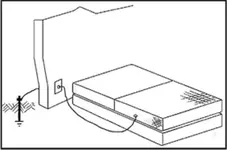Chief
Chief of Sinners.
Grounding, also called earthing, is the simple practice of making direct physical contact with the Earth's surface - like walking barefoot on grass, soil, or sand. The principle behind grounding is that this contact allows the body to absorb electrons from the Earth, which might help balance the electrical charge of the body. This idea has grown popular in health and wellness circles because many people believe grounding can reduce inflammation, improve sleep, and boost overall well-being in a natural, non-invasive way.
Scientific studies suggest grounding may affect:
Studies exploring grounding’s role in reducing inflammation have shown promising results:

Grounded sleep system (Oschman et al., 2015)
These activities help establish the direct connection necessary for grounding effects, as supported by existing research.
Taking small steps like these could support your body's natural healing and well-being, making grounding a simple, science-backed practice worth exploring.
The Science Behind Grounding
The Earth's surface holds a vast reservoir of free electrons. When you are grounded, electrons can flow from the Earth into your body. This electron transfer may neutralize positively charged free radicals, which are unstable molecules known to cause oxidative stress - a damaging process linked to inflammation and many chronic diseases.Scientific studies suggest grounding may affect:
- Inflammation: By neutralizing free radicals, grounding could help lower chronic inflammation.
- Oxidative Stress: Electron infusion may reduce cellular damage caused by oxidative stress.
- Sleep: Some research connects grounding with improved sleep quality.
- Blood Viscosity: Grounding can potentially reduce blood thickness, improving circulation and heart health.
- Immune Response: There is evidence grounding may support better immune function.
Grounding and Inflammation
Chronic inflammation is at the root of many health problems - from arthritis and heart disease to autoimmune disorders. It's important because it silently damages tissues over time, often without symptoms until significant harm occurs.Studies exploring grounding’s role in reducing inflammation have shown promising results:
- A randomized double-blind pilot study found that just one hour of contact with the Earth’s surface improved blood flow and reduced inflammation markers, helping to ease pain and promote healing.
- Grounding has been linked to reductions in cortisol, the primary stress hormone. Lower cortisol levels may help calm the body’s inflammatory response and reduce stress-related health problems.
- Research shows that grounding improves red blood cell behavior, preventing clumping that can worsen inflammation and increase cardiovascular risk.
- The electricity-neutralizing effect of Earth’s electrons on free radicals, which otherwise cause tissue damage.
- Hormonal modulation through decreased cortisol, calming inflammatory pathways.
- Improved circulation through reduced blood viscosity, facilitating better nutrient and oxygen delivery to tissues.
Practical Ways to Try Grounding
You don’t need complex devices or special training to try grounding safely. Here are some straightforward methods anyone can use:- Walk barefoot outdoors: Spend about 10–30 minutes walking barefoot on natural surfaces like grass, soil, or sand. It’s a simple way to connect with the Earth’s energy daily.
- Sit or lie on the ground: When outdoors, simply sitting or lying on natural surfaces can provide grounding benefits.
- Use grounding mats or sheets: These are products designed to connect you electrically to the Earth indoors, often via a grounded electrical outlet. They can be useful during colder months or when going outside is not practical.

Grounded sleep system (Oschman et al., 2015)
These activities help establish the direct connection necessary for grounding effects, as supported by existing research.
What Science Still Doesn’t Know
Although promising, grounding is still a relatively new research area, and many questions remain:- The optimal duration and frequency of grounding for health benefits have not been firmly established.
- It is unclear which specific health conditions benefit most from grounding.
- Long-term safety and effectiveness studies are still needed.
Precautions to Take When Trying Grounding
To keep grounding safe and beneficial, remember:- Make sure outdoor areas are clean and free of hazards like sharp objects or harmful chemicals.
- If you use grounding products (mats or sheets), ensure they come from reputable sources to reduce any electrical safety risks.
- If you have electronic medical devices such as pacemakers, consult your healthcare provider before using grounding devices to avoid interference.
Why Grounding Might Be Worth Trying
Grounding offers a natural, low-cost, and low-risk way to potentially reduce chronic inflammation and boost overall health by helping to restore the body’s electrical balance and reduce oxidative stress. Although more research is needed to fully prove its benefits, spending time barefoot outdoors or using grounding devices indoors can fit easily into everyday life.Taking small steps like these could support your body's natural healing and well-being, making grounding a simple, science-backed practice worth exploring.
